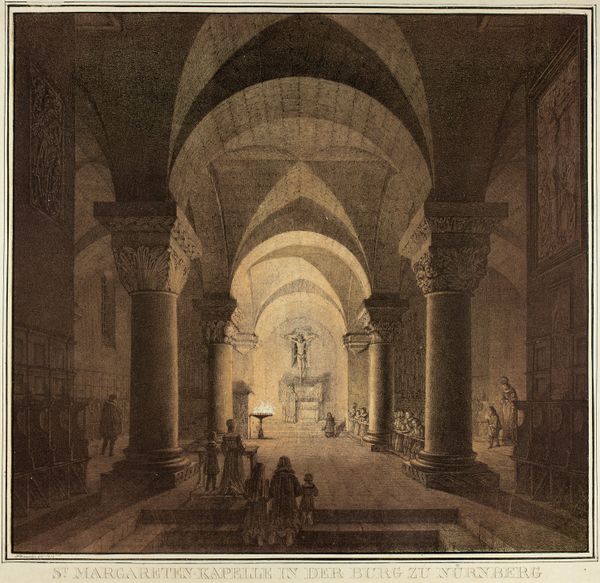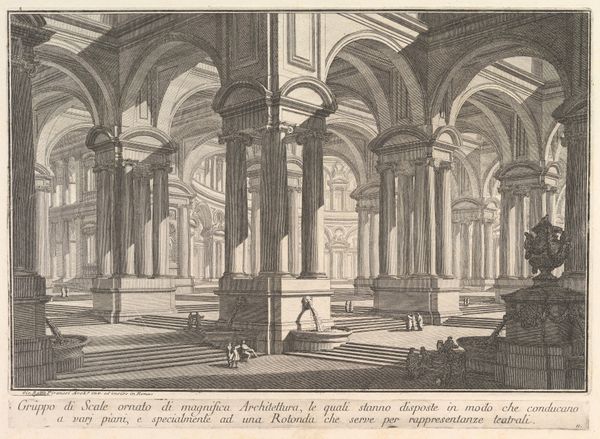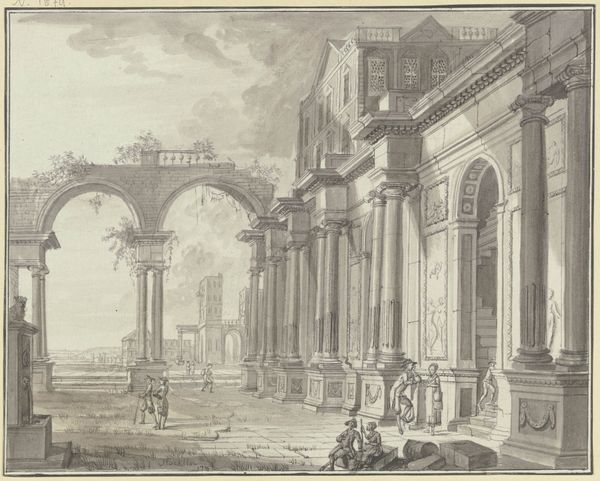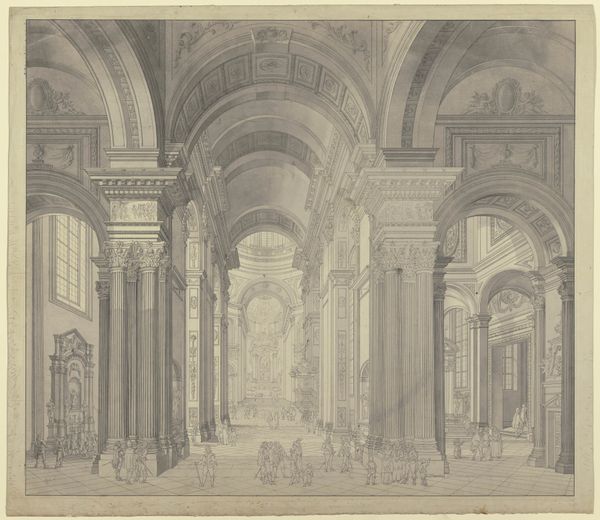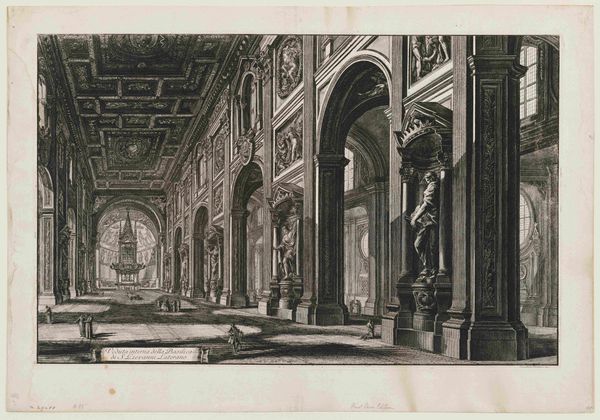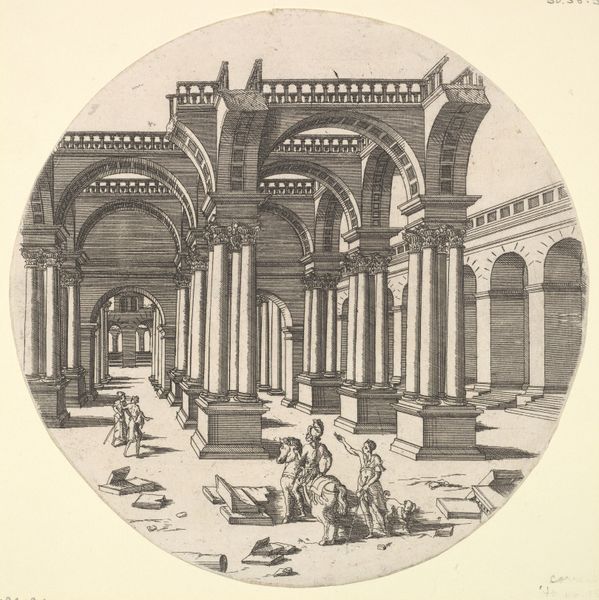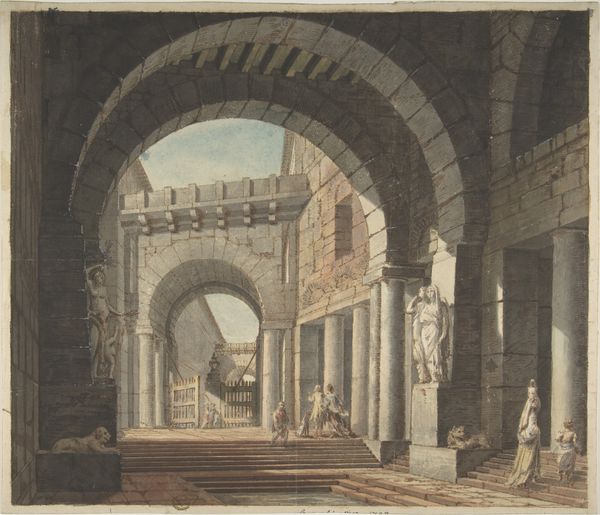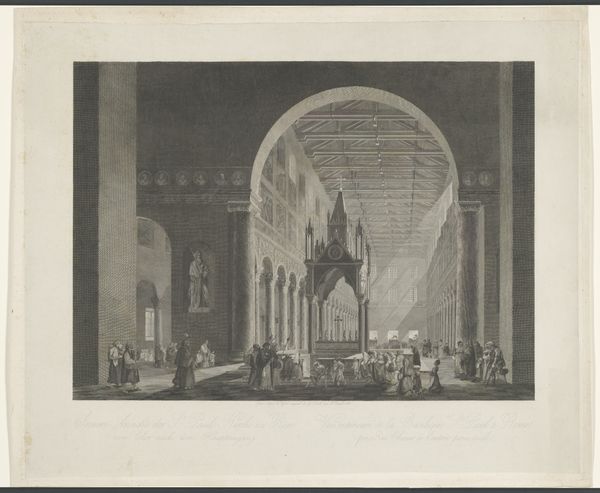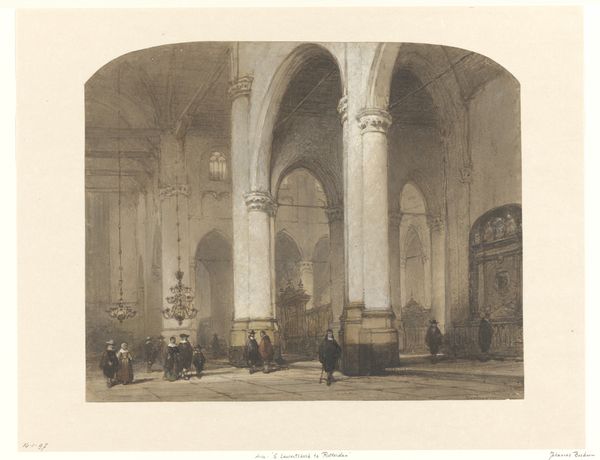
drawing, ink
#
drawing
#
narrative-art
#
baroque
#
figuration
#
oil painting
#
ink
#
history-painting
Dimensions: 355 mm (height) x 468 mm (width) (bladmaal)
Curator: Carl Krick's "Christ Driving the Money Changers from the Temple," made between 1693 and 1711, offers us a scene of upheaval rendered in ink. The location, the Statens Museum for Kunst, seems fitting, given the artwork's dramatic narrative. Editor: My initial reaction is to the intense ochre tones, the way it bathes everything in a light that's almost angry. And the sheer scale—the architectural space dwarves the human figures, creating a sense of them being caught within something much larger. Curator: That's a great observation about the color, it highlights the material process here, consider how Krick builds depth with repeated washes of ink. The layered application visible to the eye is fascinating; how the density of the ink alters the textural interpretation to showcase Baroque values during his production era. Editor: And that architectural space – all those arches and pillars, rendered in such precise detail! Churches and temples have been staging grounds for power dynamics, that we have come to associate in art over centuries. Do you feel Krick effectively leveraged symbolic potency with that in mind here? Curator: Absolutely. Look at the figures: their gestures, clothing—the semiotics that showcase not just narrative, but of the economics in play and the class disparities of the era being portrayed. What does Christ overturning tables symbolize for consumption or labor? I am intrigued if you have thoughts on how the church establishment comes into the mix. Editor: Indeed! To see Christ here, challenging the established order—he’s disrupting not just commerce, but the perceived sanctity of space. Overturning those tables isn’t just a physical act; it’s a challenge to the very symbols of authority and piety as tools of manipulation for some who want to capitalize it. Curator: And consider how such scenes, depicted across artistic mediums of history, speak to persistent concerns about institutional corruption and the power of morality against commodification. Editor: Definitely. Krick has delivered not just a scene, but a visual touchstone for these themes that resonate. This temple purging as both a historical event and as an icon for challenging established orthodoxies—remarkably thought provoking. Curator: Indeed, reflecting how Krick grappled with materials and means to make such statements still urges discussion on values, labour, and purpose. Editor: Well, thank you, it makes me consider the role art has played, not just in mirroring history but influencing its unfolding over generations of audiences.
Comments
No comments
Be the first to comment and join the conversation on the ultimate creative platform.




